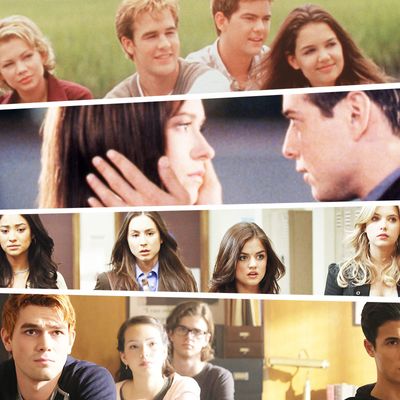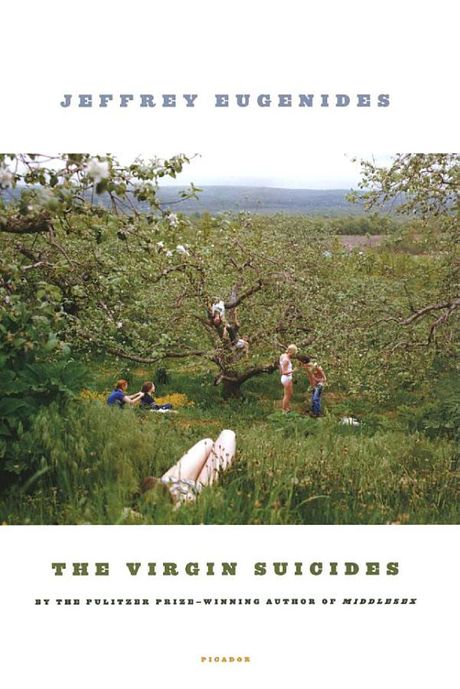
In an interview with the Paris Review in 2016, Jeffrey Eugenides admitted that the title of his career-launching debut, The Virgin Suicides, was meant to elicit a strong reaction. “With your first novel,” he explained, “no one knows who you are, you’ve got to at least have a title that [would make] someone say ‘What is that?’” Twenty-five years after its publication, the novel’s first sentence is still shocking, too: “On the morning the last Lisbon daughter took her turn at suicide — it was Mary this time, and sleeping pills, like Therese — the two paramedics arrived at the house knowing exactly where the knife drawer was, and the gas oven, and the beam in the basement from which it was possible to tie a rope.” Five teenage sisters — all smart, beautiful, beloved — are dead by their own hands.
The story unfolds during a hot 1970s summer, somewhere around Detroit. Cecilia, the youngest Lisbon sister, slashes her wrists but is rescued before she bleeds to death. A few weeks later, during a party given in her honor, guests hear “the wet sound of her body falling onto the fence that ran alongside the house,” and find her suspended there, impaled, dead. Over the next year, the four remaining Lisbon sisters withdraw from the world — until, exactly a year after Cecilia’s suicide attempt, they stage their own dramatic deaths.
The Virgin Suicides made an impact nearly as dramatic. Critics were captivated by the novel’s Greek chorus–like first-person plural narrative voice — an unnamed group of neighborhood boys, who document every detail of the girls’ lives — which Eugenides pulls off without any sign of strain. For readers, its compressed time frame distills the haziness of youth into a song of misplaced nostalgia.
The girls themselves are kept at a distance, floaty figures who blend into a tantalizing, if murky, composite — a prepackaged ensemble of femininity. Their golden-haired good looks, glimpsed mostly through windows or from down a long school hallway, made readers want more. So six years after its publication, Sofia Coppola turned The Virgin Suicides into her first feature film, a languorous daydream of wispy chiffon and ripening teenage sexuality, punctuated abruptly by the sisters’ horrific deaths. In the years since, both the novel and the film have become shorthand for adults struggling to process their lost youth.
When the novel was published in 1993 we were pre-Bieber Fever, pre-13 Reasons Why, pre-nubile vlogger fame. Teenagers were consumers rather than influencers. Novels about teens were marketed to teens, and consisted of plucky strivers who overcame modest beginnings in classics like A Tree Grows in Brooklyn and I Capture the Castle; sexually curious high-schoolers of the Judy Blume ilk; or plasticine, melodramatic charmers like the “perfect size six” Sweet Valley twins. The Virgin Suicides was that rare book that focused on adolescence but sought adult eyes.
The rest of the 1990s would see a surge of narratives that relished the complexities of teenage life. In 1994, the year after The Virgin Suicides was published, Claire Danes’s quivery lip had its coming out via the poignant (and only) season of My So-Called Life; Party of Five, a bizarre cousin to The Boxcar Children, debuted on Fox. 7th Heaven, ostensibly framed around the entire Camden family but focusing much of its energy on teenage Matt, Lucy, Simon, and Mary’s hair, began its 11-season run in 1996. The WB launched its pursuit of teen viewers in 1997, starting with the ass-kicking high-schooler Buffy the Vampire Slayer and reaching its zenith with teary Dawson’s Creek and angsty Felicity in 1998. Teens certainly tuned in. But the median age of a Dawson’s Creek viewer was 27. 7th Heaven’s was 35. Buffy was taken up by clever, overgrown drama kids. Adults wanted nostalgia with a veneer of drama far more sensational than the stuff of their own fading memories. They wanted to slip into the wild emotions and hormone surges of teenage life — to ogle the chiaroscuro of innocence and darkness — from a safe distance.
The Virgin Suicides anticipated, and perhaps set off, that American adult obsession with teenage tragedy. It understood that those school days become barometers for every happiness or misery later in life, and it leveraged one of humanity’s most potent sentiments: nostalgia. The novel somehow feels like youth itself, a collection of overheated memories. Eugenides creates an ideal of teenage life that never existed — that we, the readers, never knew, but that we all still fervently believe once happened. And then he takes it all away. Even now, 25 years after the book was published and about 40 years after it was set, we still subscribe to the The Virgin Suicides’ simulacrum of teenhood as quintessential.
Eugenides’s plot recapitulates that imaginary journey through time. The sisters’ lives are documented rigorously by the boys, who collect specimens from the girls’ closets and bedrooms and backpacks — bras and makeup and term papers. They hold onto these trinkets into adult life, and refer back to them like lecturing professors as they narrate the Lisbons’ slow retreat from the world. They study the girls and we, in turn, study them, as they embellish their own memories, fixate on the tragedy they know is coming, and grapple with how they’ve let it shape every minute of their lives.
In the novel’s long wake, teen-filled television has adopted the same narrative strategy: In Gossip Girl, Pretty Little Liars, and Riverdale, outsiders watch and document, as riveted as Nick Carraway peering over into Gatsby’s yard. Eugenides’s men never ask themselves why they’re so fixated on that year, and as readers we don’t ask, either. Because we know: We rewrite the narrative of our own adolescence to fit the idea of who we want ourselves to be.
Despite their piteous ends, there’s a lightness inherent in the Lisbon sisters, with their long locks and soft looks. The setting feels Edenic, too, Leave It to Beaver wholesome. The Lisbons live in a verdant pocket of Detroit’s suburbs, a neighborhood populated by fathers with “paper-pushing arms,” where boys build tree houses and kids stay outside all day. The boys explain that there has never been a funeral during their lifetimes: Even the elderly live free of the specter of death. It’s a setting like Riverdale or Capeside or Pretty Little Liars’ Rosewood, unblemished until tragedy strikes.
“Everyone we spoke to dated the demise of our neighborhood from the suicides of the Lisbon girls,” the boys explain. In the year of their death, Dutch elm disease wipes out the neighborhood’s stately verdure, just as the auto industry tips over into steep decline and the weather patterns turn alarming and severe.
This is the cultural legacy of The Virgin Suicides. It fetishizes and mourns the girls in equal measure, just as we fetishize and mourn our own childhoods, and neighborhoods, and personal tragedies. It gives adults permission to transport themselves back into the light and dark of their adolescent selves, to avoid coming to any firm conclusions, to stay unhealthily obsessed — just as the boys do — with an era in which we hadn’t yet become who we are now. It should come as no surprise that three of the biggest franchises of the past 25 years — Harry Potter, The Hunger Games, Twilight — cater to adults imagining themselves back into a sensationalized version of their pasts.
After all, the story of The Virgin Suicides is only a collective memory, bolstered by the evidence that the boys gather as they work their way through the neighborhood, keen reporters out to record one vital story. They assemble any scrap they can find that might help them understand the central tragedy of their childhood, but they don’t even know the shape of the puzzle.
The story they’re attempting to piece together is of the Lisbon sisters’ deaths, but really it’s the story of the moment when adulthood begins, and when choices start to matter. Which is why the transition from sunny teen sisters living in a suburban reverie to front-page tragedy in a desiccated neighborhood is so meaningful. The Virgin Suicides asks, Why does life go wrong? If you can trace the route back to the moment things fell apart, can you fix it?
But the story of the Lisbon sisters remains encased in amber. The boys end up with no answers: “This is all a chasing after the wind.” Readers are left in the same position — outsiders gawking over a tragedy, ears perked up for more gory details, ruminating over their own years past, worrying if they too have turned into ghosts of their former, younger selves.
Asked last year in an interview if he now finds it difficult to write about teens, Eugenides gave the answer any of us would, if we were honest with ourselves: “I always can write about teens. … I used to be one, I still am one.”


